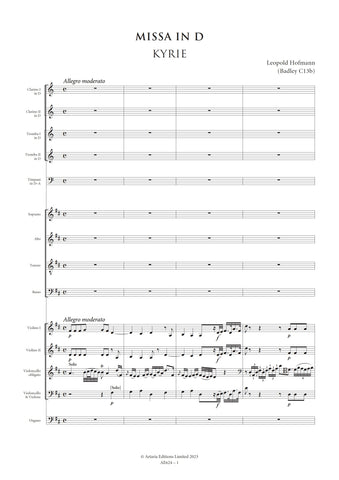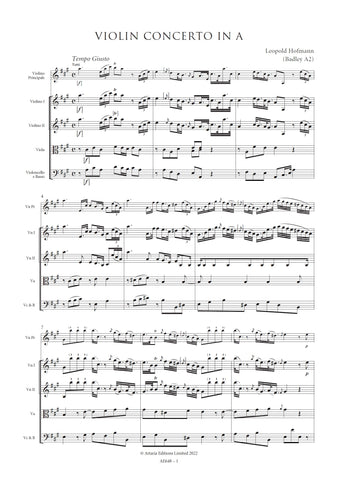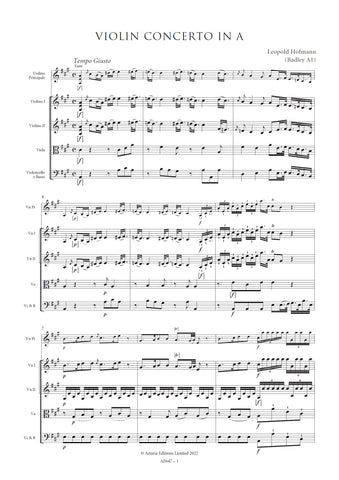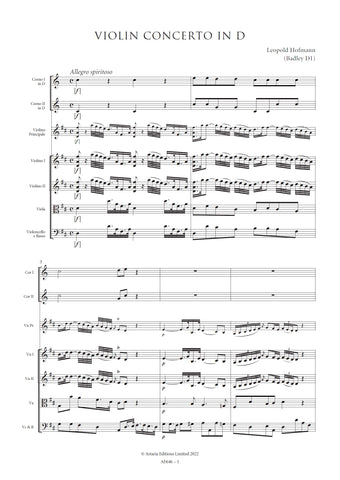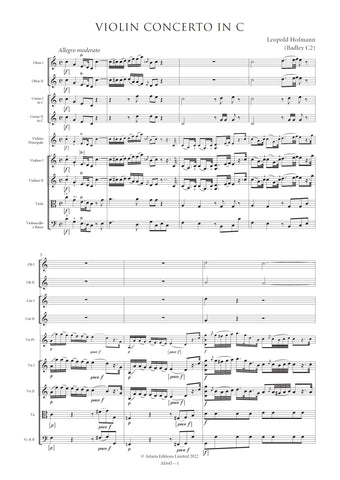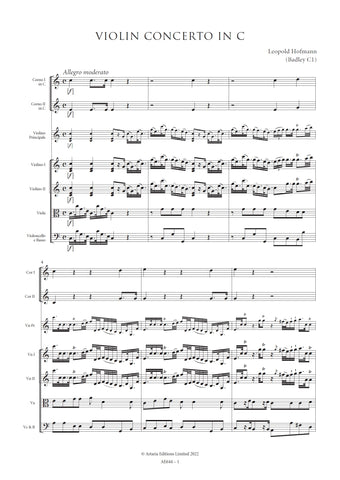Hofmann, Leopold: Missa Sancti Erasmi (Badley D4a) (AE642) – sheet music
Next Product
Description |
Hofmann, Leopold (1738-1793)
|
||||||||||||||||||
Details |
Leopold Hofmann’s Missa Sancti Erasmi [Mass D4a] occupies a unique place among his other masses. It is by some measure the longest of them and his sole known contribution to the Viennese ‘cantata’ Mass tradition.Its uncharacteristic structure, however, also suggests that it may belong to the ‘Kyrie-Gloria’ mass subgenre. The long sequence of closed-form movements which characterizes the ‘cantata’ Mass is found exclusively in the Gloria with the exception of the Christe and Benedictus settings. The remainder of the Mass is identical with its variant form D4b (with the exception of a reworking of the Benedictus for chorus) which adds weight to the argument that the Kyrie and Gloria may have begun life as an independent composition.This is supported to some extent by the copy of the work preserved in Stift Seitenstetten under the signature D XII 3 d which serves as the basis of the present edition. The evidence suggests that sometime after the completion of D4a, which was surely composed for a specific occasion, Hofmann rewrote the Kyrie and Gloria, retaining the choral movements and expanding them where necessary to accommodate the sections of text previously set as closed-form solo movements, and then he composed the Credo, Sanctus and Agnus Dei to complete the cycle. These additional movements allowed Mass D4a to be performed in a more conventionally complete form, although this version of the work, with its elaborate vocal soli, circulated less widely than its variant form at least on the evidence of the surviving copies. |
||||||||||||||||||
Score Preview |




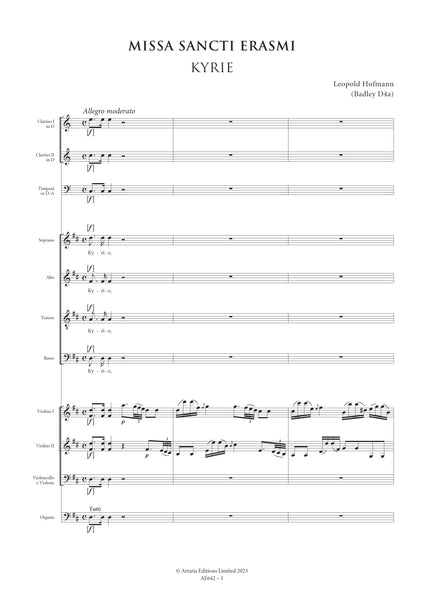
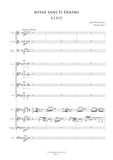
![Hofmann, Leopold: Missa Sancti Erasmi (Badley D4a) [Vocal Score] (AE642/VS)](http://www.artaria.com/cdn/shop/files/ae642vs_1stpage_large.jpg?v=1697798128)

![Hofmann, Leopold: Missa in D (Badley C13b) [Vocal Score] (AE624/VS)](http://www.artaria.com/cdn/shop/files/ae624vs_1stpage_large.jpg?v=1697794050)
